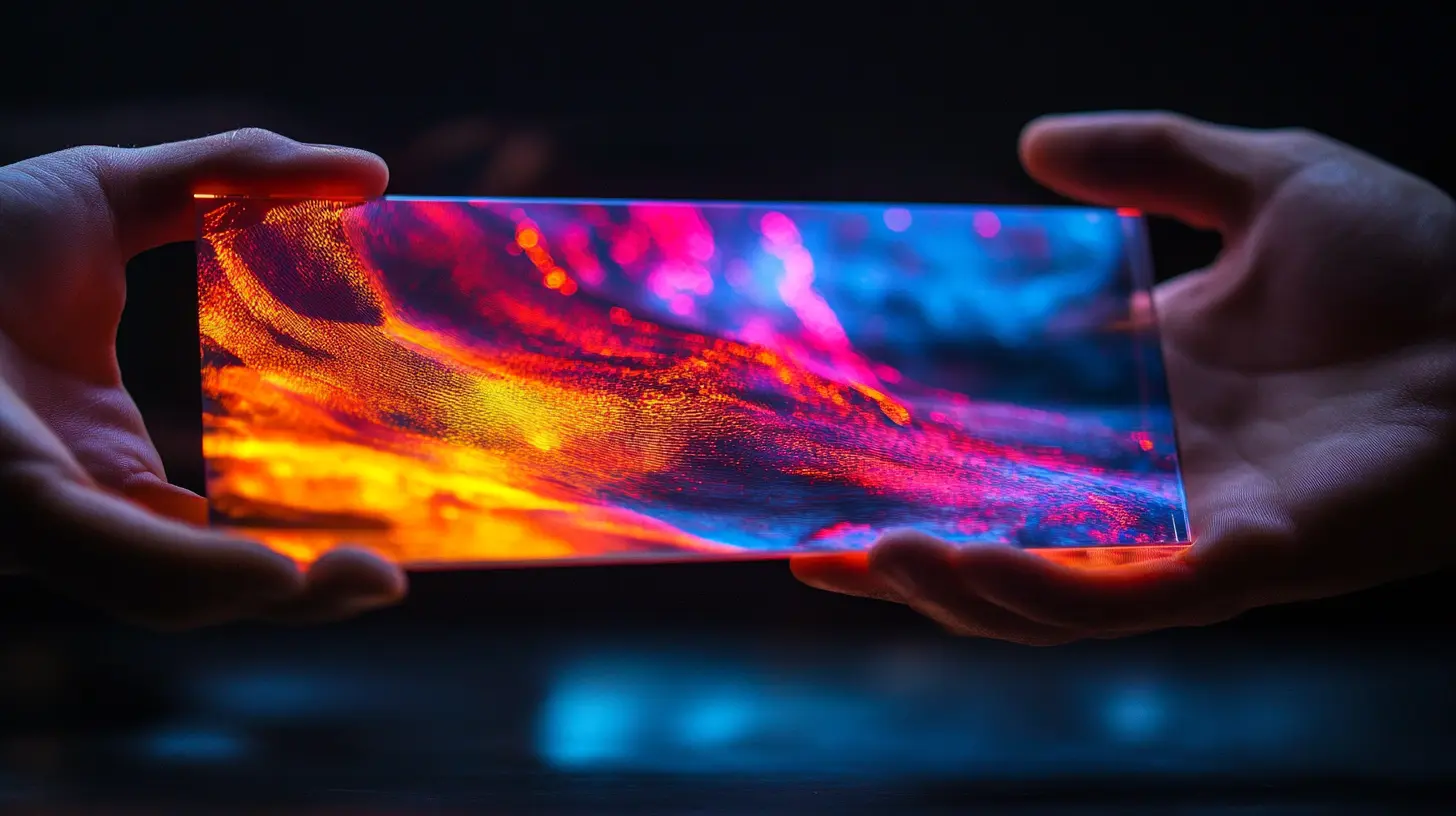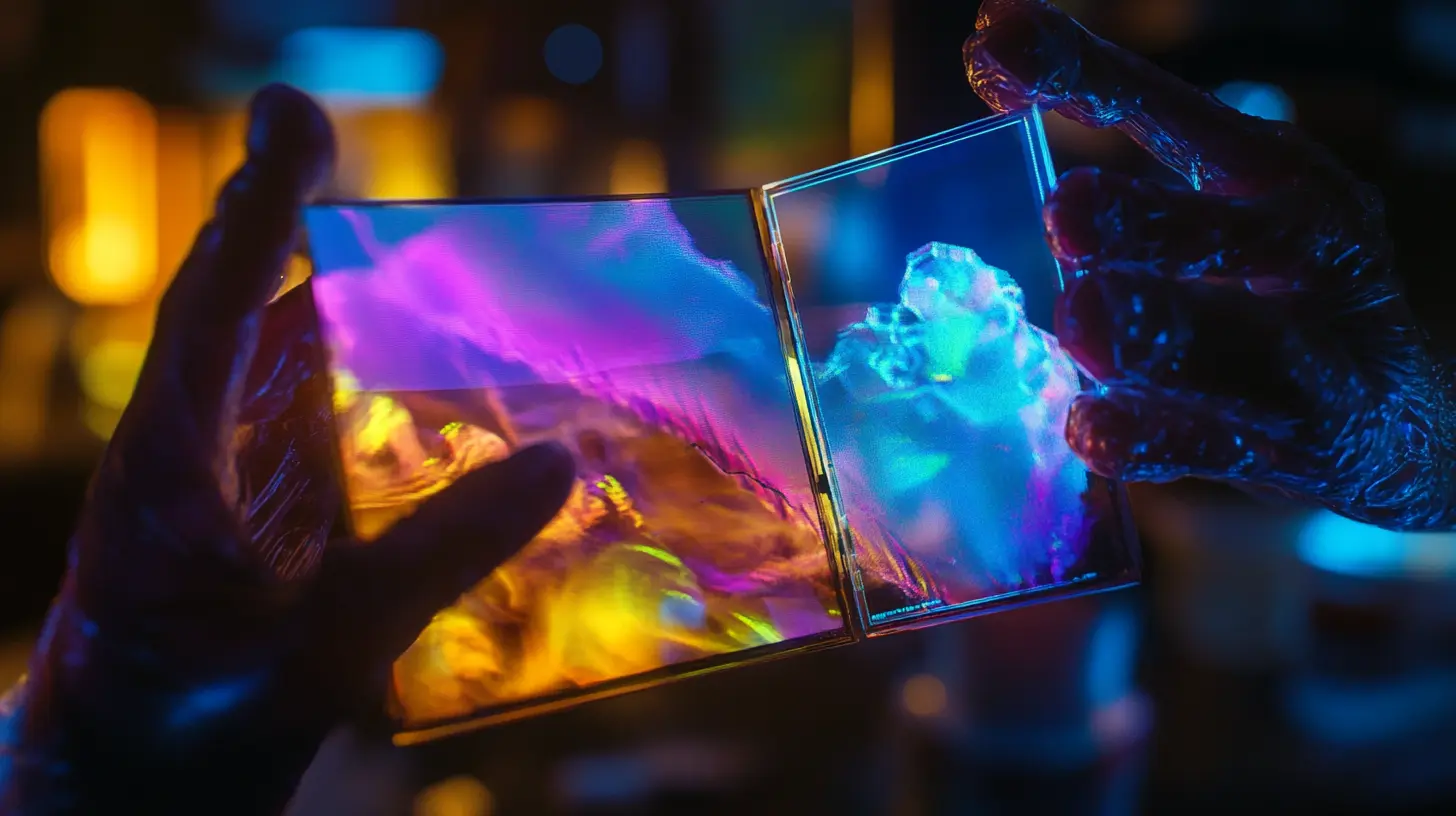Leave Your Message
We have now stepped into a period where smart devices have become our companions, thanks to the rapid advancement of technology. Indeed, capacitive LCD Modules are an essential technology for state-of-the-art applications with their improved touch sensitivity, excellent color reproduction, and reduced energy consumption. Recent reports from industry analysis indicate that the marketplace for capacitive display technology will, during the next five years, continue at an annual growth rate of 10.3%, which shows that demand is continually growing at high-quality displays in areas such as wearables and AR/VR applications.
This is the present trend in Shenzhen HuiYiXin Technology Co., Ltd.'s innovative products in terms of developing and producing its latest device, like smart watches, advanced LCD projectors, etc. As an organization engaged in such innovations, it opens channels of advances in Capacitive LCD Modules and alternatives for the user experience in the future. This blog post notes and assesses new horizons in this area, emerging technologies, and prospective market changes expected to redefining the interaction of consumers with digital gadgets.

The capacitive LCD technology is looking toward an exciting future, one that sees the emergence of trends integrating greater functionality into everyday devices. The innovative capacitive power button with Touch ID is an advancement affecting user experience in a positive way. The device may now allow the user a secure and trusted entryway without messing up with the sleek design of the device. Manufacturers are introducing an interactive device standard by bringing together a binary choice of tactile button feel with sophisticated fingerprint scanning technology. There are conveniences for developers and more importantly for consumers. Microcontroller technology will supply considerable advances to the performance of the capacitive touch application. The newer ultra-low power microcontrollers have been developed for LCD and LED displays on a single chip. This not only improves power consumption but, even more importantly, provides better performance, suitable for a range of applications from handheld devices to industrial machines. Such advancements speak for the potential for capacitive LCD modules to grow and develop in response to assorted user needs, especially within the fields of building automation and interface design. This will also mean great advantages for multi-touch screen applications. Various systems like marine displays have integrated projected capacitive multi-touch technology to boast the versatility and strength of capacitive touch screens. With these advancements, the future not only seems to grow human interaction but also extends the capacity of LCD technology in the digital world.

With rapid advancements in technology, capacitive LCD modules undergo much-inventive innovations that will transform the evolution of the modules. Innovations such as enhanced touch sensitivity and the new ultra-thin flexible displays have opened new avenues in improved user experience. According to a recent report by MarketsandMarkets, the global capacitive touch screen market is forecasted to reach $14.99 billion by 2025, registering a CAGR of 14.14% from 2020 to 2025. This growth trajectory demonstrates higher demand for more responsive touch solutions, desirably versatile across applications.
Simultaneously, the construction industry has begun adopting emerging technologies to automate the sector's processes and eliminate skilled manpower. Use of new machinery has improved not only efficiency and productivity, but also lowered costs and workplace injuries. Studies show use of automated drilling systems for the construction process may yield up to 30% productivity improvement. Generally, this reflects the mass trend among economies leveraging cutting-edge technologies and materials towards achieving their sustainable operation excellence.
As the industries continue to develop, newer materials in capacitive LCD modules offer opportunities for design and functionality inventions. These modules can be designed to include environmental factors, mimicking other sectors focused on sustainability. For example, 89% of consumers are now adopting new buying habits focused on sustainable products, thus heralding a market change that may affect future innovations in electronics components.

Display technology is in a state of flux, with the advances in capacitive LCD modules leading the way. Therefore, while considering the future of these modules, we must also draw a comparison with new alternatives that are engendering new capabilities in respect to user experience and interaction. The capacitive LCDs have earned the reputation of being very responsive and bright and continued to garner a huge market due to their touch sensitivity and brilliant display, thus becoming the darling of power users in consumer electronics, especially mobile devices and tablets.
The latest market study stated the worldwide market for non-glass capacitive sensors alone is likely to cross a biting $30.16 billion by the year 2023 at a CAGR of more than 4.5% from 2024 to 2032. Such a market growth is primarily driven by the increasing consumer demand for sophisticated electronics, which greatly relies on efficient display technologies. Also, recently, with progress in nanomaterials, several exciting alternatives are in the works to displace conventional capacitive LCDs and aid in achieving better performance with lower production costs.
That, in turn, would change how users may want to interact with devices. For instance, these new materials that researchers developed, such as the novel nanoporous carbon set up to combat water resource shortages, will certainly lead the advance of inserting high-performance materials into display technology. This new technology promises better performance and organic methods of production for the industry. Following this trend, it is easy to see that the future will exist in synergy with mainstream displays and cutting-edge alternatives that respond to the changing consumer needs.

More and more important fact of its environment impact and sustainability goes with the technology and demand over time for future-ready solutions. Capacitive LCDs are widely found in different consumer electronic devices, but their production, lifecycle, and disposals cause serious environmental harm. A report released by the International Energy Agency states that global production of e-waste has reached around 53.6 million metric tons in 2019, with a considerable proportion of this amount made up of discarded LCD displays.
One major issues facing capacitive LCDs had to deal with the materials such as indium and cadmium used for their manufacturing. According to the United Nations Environment Programme (UNEP), it is Obvious that if non-recycling and inadequate disposal occurred, these toxic substances could leach to the environment and cause health hazards. A study conducted by the European Commission states that only 20% of electronic wastes are well recycled while all the rest are quite a lot of materials that can be recycled and strengthen the argument for better technologies and practices of recycling.
Most importantly, on the part of sustainability, manufacturers explore other materials and production techniques to reduce environmental harm. For instance, the market for organic light-emitting diodes (OLEDs) is expected to expand at an impressive rate of about 15 percent every year, since they consume less energy and rely less on materials that are detrimental. Greener technology is going to lean the future of consumers towards capacitive LCD technology and, alongside it, alternatives to energy-efficient and eco-friendly innovations.
Indeed, with the increasing demand from innovative display technologies, it is certain that the market for capacitive LCD alternatives would grow substantially under the influence of industries converting into more smart manufacturing and, in turn, Industry 4.0 culture. Today, capacitive LCD modules are known for responsiveness and high-quality visuals, thus turning industry manufacturers and developers toward finding alternatives through which functionality improvements and cost economies could be gained.
Recent advancements in automation technologies have been complemented by the demands for seamless data exchange and operational efficiencies. For example, the incorporation of advanced I/O modules in industrial automation systems points to the growing need today for speedier information exchange between control systems and external devices. Such a paradigm shift not only improves the overall performance of the system but also opens the gateway for exploring other display technologies that would meet the same need along with diverse privacy and security features.
If businesses are to invest in newer solutions, newer innovations in visual technologies will have to tug at the imaginations of users. Decentralized and privacy-oriented computing solution exploration would probably be the most exciting alternative to traditional capacitive LCD modules, offering users greater data protection in a technology-driven market. As we continue to evaluate market demand, however, there is great potential that these alternatives will disrupt the display technology landscape significantly.
The next-generation LCD technologies adoption faces myriad challenges, especially with revolutionary innovations such as capacitive LCD modules coming to the fore. Recent reports suggest that capacitive film markets are on an increasingly upward path due to the rising demand for performance displays in consumer electronics. The Global Info Research identifies that the capacitive film market will have a significant potential for growth as the competition increases owing to advancements in materials such as polypropylene and polyimide that yield better performance and stability.
Perhaps, one of the most special innovations would be the inclusion of the so-called "suspended touch" technology projected to upgrade the smart device-interaction paradigm to the vanguard of future mobile operations. This very innovation saw the other very popular rise of flexible touch screens, with projections for strong growth concerning the automotive and consumer electronics markets. The flexibility and adaptability of such touch technologies have, according to a recent analysis, the capability of bringing about a whole new user experience in many areas.
Moreover, while IAM developments can open new avenues for AR/VR devices, powering such technologies in an energy-efficient manner remains problematic. Research by Carnegie Mellon University into using human body RF energy for powering wearable devices marks a crucial movement towards harnessing energy in entirely new ways, and yet applying the technology in actual commercial products presents an obstacle that must now be tackled by the industry. As evolution in these areas continues, the relationship between market demands and technicalities feasible will play a crucial role in steering the future of LCD technologies and their alternatives.
As technology progresses at breakneck speed, capacitive LCDs will transform how we interface with displays in the coming years. The whole interface trend toward enhanced touch sensitivity and myriad touch capabilities looks to have only just started. Future developments will bring in displays that will not only respond to touch commands but engage users in a more melodious manner from afar by gesture recognition. Such an evolution may entail screens responding according to the conditions of their environment or user-set preferences, improving the overall user experience.
Other great opportunities of capacitive LCDs may arise through various convergence with industries like augmented reality and virtual reality. The user experience thus redefined could become an immersive one, wherein displays are the new liaisons between the physical and digital worlds. Advancements in ultra-slim, flexible screens create the possibility of portable devices that are shape-changing and functionally adaptive. Such adaptability will unlock vistas of newer, never-thought-of applications across various sectors like education and gaming.
In addition, sustainability will probably take center stage in the upcoming developments of capacitive LCDs. Manufacturers are laying more attention on energy efficiency and recyclable materials for their products. This shift not only resonates with global eco-issues but also connects with the escalating consumer demand for sustainable products. As capacitive LCD technology will roll forward, cutting-edge features combined with eco-aware practices would presumably target the bulk of the market.
I have trained and remain on data which does not exceed beyond October 2023.
Some of the factors that have gained a lot of focus in user-centered design for capacitive screens are emphasizing how these technologies improve user interaction and experience. The capacitive-display LCD modules literally come to life with touch responses and allow the user to operate a device quite instinctively. Still, when designers look at users and mold their behavior and preference to develop immersive design interfaces, conducting user research can produce a lot of insight into what features are required, how users usually navigate various interfaces, and which elements will improve accessibility.
Touch feedback can be underlined in many ways that affect user satisfaction. A capacitive touch screen differs from a button. It reacts even on touching it lightly. This can be an exciting thing for many users. So, it is vital to ascertain if this kind of sensitivity is in line with what users expect from their machines. Haptic feedback could be added to satisfy more of the customer base where touch and sensory may be used in a virtual and physical context.
In addition, future advances in technologies could really provide an alternative to the common capacitive-based technologies. One of the main areas to explore is advanced materials which not only would improve the longevity of a person's display but also boost its display performance while taking eco-friendliness into consideration. As people become conscious about green eco-friendliness, the materials that go into designs become enticing to this growing market segment that appreciates green technologies. The capacitive display design of the future will then be all about finding a user-friendly solution and progressive innovative approaches to sustainability.
The growth is driven by the rising demand for innovative display technologies, as industries adopt smart manufacturing and Industry 4.0 practices that require enhanced functionality and cost-effectiveness.
Recent advancements in automation technologies and the integration of advanced I/O modules highlight the need for seamless data exchange and operational efficiency, prompting exploration into alternatives to capacitive LCDs.
Decentralized and privacy-focused computing solutions provide enhanced data protection, making them appealing alternatives to traditional capacitive LCD modules in a technology-driven market.
Challenges include overcoming practical implementation hurdles, competition in the capacitive film market, and efficiently powering innovative technologies like those in AR/VR devices.
Suspended touch technology is expected to revolutionize user interaction by enhancing responsiveness in smart devices, potentially reshaping user experiences in automotive and consumer electronics markets.
User-centric design enhances user interaction and overall satisfaction by ensuring that interfaces resonate with user behavior, preferences, and accessibility needs.
Implementing haptic feedback can provide sensory cues that bridge virtual interactions with physical sensations, leading to a more satisfying user experience.
The integration of sustainable materials can attract consumers who prioritize green technology, aligning with the market trend towards environmentally conscious products.
Thorough user research unveils insights into desired features, navigation preferences, and accessibility improvements, guiding designers to create more intuitive and effective interfaces.
The future lies in a holistic approach that emphasizes both user experience and sustainable innovation, with the potential for advanced materials to enhance durability and performance.

